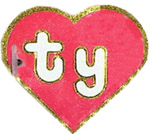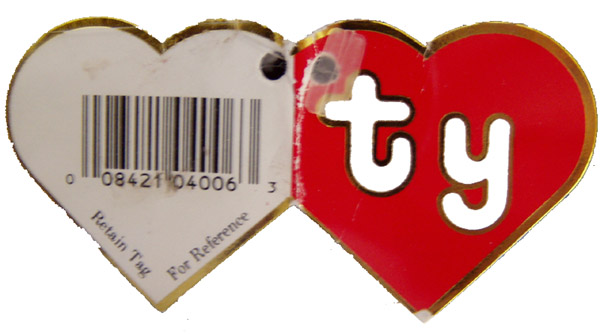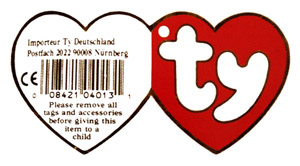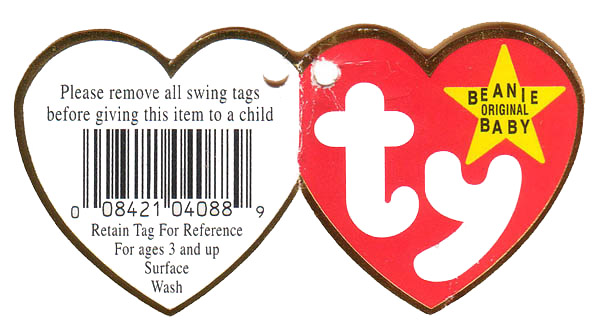Interested in uncovering the value of your Beanie Baby collection? Delving into the world of Beanie Baby appraisal can be an exciting journey, filled with nostalgia and fun memories. Whether you’re a seasoned collector or just stumbled upon a stash of these iconic plush toys, here’s a handy guide on how to find out how much Beanie Babies are worth.
Misconceptions About Ty Beanie Babies Values & Pricing
As with any collectible item, Beanie Babies have been subject to numerous misconceptions regarding their value over the years. These misconceptions have led to inflated expectations and misunderstandings among collectors and sellers alike. Here are some common misconceptions about Beanie Baby values:
eBay Listed Prices DO NOT Reflect True Value: Some sellers mistakenly believe that listing their Beanie Babies at high prices guarantees a significant return on investment. However, listing prices on online marketplaces such as eBay or Etsy do not always reflect a Beanie Baby’s true value. Actual selling prices may vary based on factors like condition, competition from other sellers, and fluctuations in collector interest. It’s essential for sellers to research recent sales data and consider multiple factors when pricing their Beanie Babies.
Understanding the Difference Between eBay Listings and Sold Listings for Beanie Babies:
- eBay Listings: eBay listings refer to active listings currently available for sale on the eBay platform. These are items that sellers have listed for sale but have not yet been sold. When searching eBay listings for Beanie Babies, you will see a variety of items listed for sale, including both current and discontinued Beanie Babies, with prices set by the sellers.
- eBay Sold Listings: eBay sold listings, on the other hand, are listings that have been successfully sold and completed on eBay. These listings provide valuable information about the actual selling prices of Beanie Babies, as opposed to the asking prices in active listings. Sold listings reflect what buyers were willing to pay for specific Beanie Babies in the recent past.
How They Help Determine Fair Prices:
- eBay Listings: While eBay listings can give you an idea of what sellers are asking for Beanie Babies, they may not necessarily reflect their true market value. Sellers can set their prices based on a variety of factors, including perceived rarity, condition, and personal preference. As such, prices in active listings may vary widely and may not accurately represent the actual market value.
- eBay Sold Listings: Sold listings, on the other hand, provide concrete data on the prices that buyers were willing to pay for Beanie Babies. By reviewing sold listings, you can see the actual selling prices of similar Beanie Babies, which can help you gauge their market value more accurately. Sold listings can also help you identify trends in pricing and determine fair market value for specific Beanie Babies based on recent sales data.
In summary, while eBay listings can give you an idea of what sellers are asking for Beanie Babies, eBay sold listings provide more reliable information on actual selling prices, helping you determine fair market value and make more informed decisions when buying or selling Beanie Babies.
While this may be disappointing to many reading this, it is sadly the reality with Ty Beanie Babies today. Apart from a very, very few exceptions, most Beanie Babies just aren’t worth that much anymore.
How To Research Actual Sales Prices Of Ty Beanie Babies
As we’ve established – listing prices (for sale prices) are not good indicators of value. Sold Prices (actual sales that have been completed and paid for) are the only way to accurately estimate your Ty Beanie Babies values.
Here’s how to do it on eBay:
- Open your web browser and navigate to the eBay website (www.ebay.com).
- Sign in to your eBay account, or create one if you don’t have one already.
- In the search bar at the top of the eBay homepage, type in the name of the specific Beanie Baby you want to search for and press Enter.
- On the search results page, locate and click on the “Advanced” link next to the search bar.
- This will take you to the Advanced Search page. Scroll down to the “Search including” section and check the box next to “Completed listings.”
- Enter any additional search criteria you want to include, such as price range, item condition, or seller location.
- Click on the “Search” button at the bottom of the page to initiate the search.
- eBay will now display a list of completed listings for the specific Beanie Baby you searched for, along with details such as the final sale price, listing title, and item condition.
- Be sure to pay attention to the specifics – different hang tag and tush tag generations can significantly effect the price of your Beanie Babies. Be sure you’re looking at true comparable sales.
- You can further refine your search results using the filters on the left-hand side of the page, such as sorting by price or item condition.
- Take note of the prices that similar Beanie Babies have sold for in the past to help you gauge the value of your own Beanie Baby.
- Factor in eBay selling fees and shipping. These are not shown in the completed listings so take the final number and take off about 15% for selling fees and $5-10 for shipping fees.
The Condition Of Your Beanie Babies & Tags Greatly Effects Pricing
The condition of Beanie Babies plays a paramount role in determining their value and desirability among collectors. Unlike some other collectibles, such as coins or stamps, Beanie Babies are made of fabric and susceptible to wear, tear, and damage over time. As such, collectors place great importance on the condition of Beanie Babies when assessing their worth. Factors such as cleanliness, completeness, and the presence of any flaws or imperfections can significantly impact a Beanie Baby’s value.
Maintaining pristine condition is crucial for preserving the value of Beanie Babies. Collectors typically prefer Beanie Babies that are free from stains, tears, odors, and other signs of wear. Tags, which often contain vital information about a Beanie Baby’s authenticity and origin, should be intact and legible. Any damage to the fabric, stitching, or accessories of a Beanie Baby can detract from its value and appeal to collectors, making it essential for owners to handle and store their collections with care.
Moreover, the rarity and desirability of certain Beanie Babies can amplify the importance of condition. For highly sought-after designs or limited editions, collectors may be willing to pay a premium for Beanie Babies in pristine condition. Conversely, Beanie Babies with significant flaws or damage may struggle to find buyers or command lower prices on the secondary market. Therefore, collectors and sellers alike must prioritize maintaining and assessing the condition of their Beanie Babies to ensure accurate valuation and preserve their investment value over time.
When it comes to selling your Ty Beanie Babies Collection, most buyers will not accept non-mint and/or missing hang tag Beanies.
Which Ty Beanie Babies Are Actually Worth Something
In general, if you’re searching through your collection you should look for Beanie Babies that DO NOT have a yellow star on the red Ty heart hang tag.
Generation 1-3 Beanie Babies have the red heart hang tag, but DO NOT have the yellow star. These are rare and can be worth a lot of money! Recent sales of some of the rarest Generation 1-3 Beanie Babies have exceeded $1000 each!



Generation 4+ Beanie Babies are not worth anything with very, very few exceptions. These are all mass produced and are considered “commons” with just a few exceptions here.

Notice the yellow “BEANIE BABY ORIGINAL” star on the Generation 4+ tag. This is generally considered the easiest way to quickly check if you have anything good or not.
